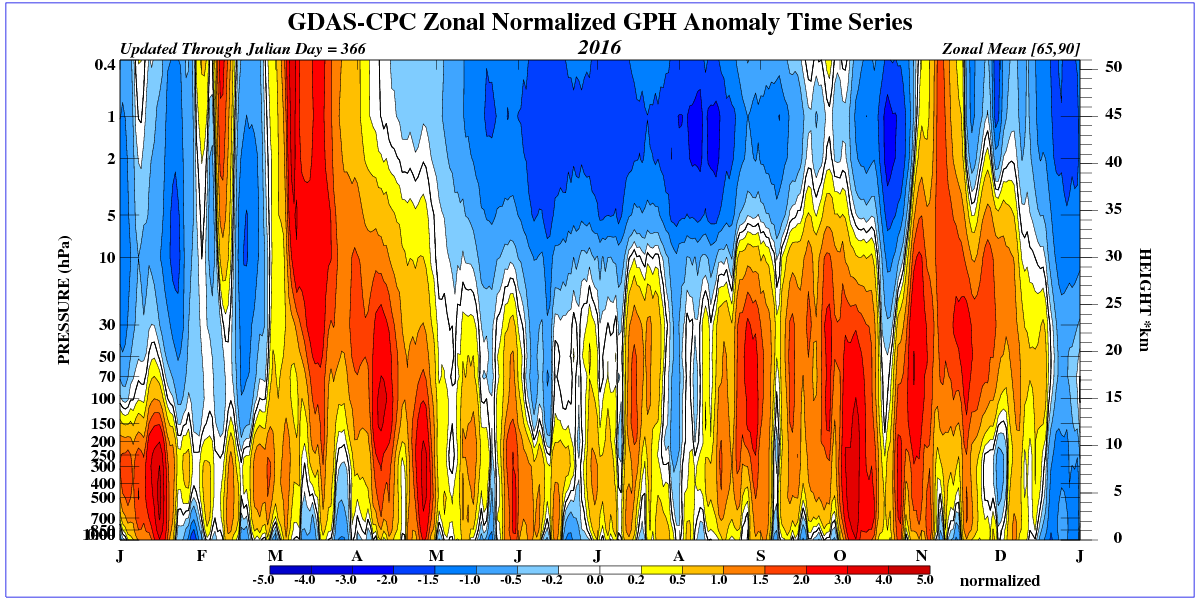Many readers are keeping an eye on the sea surface temperature anomalies of the eastern equatorial Pacific. The latest sea surface temperature anomaly map from the CMC Environment Canada (Figure 1) shows cooler than normal sea surface temperature anomalies along the equatorial Pacific east of about 125W, indicating the tropical Pacific is heading toward La Niña conditions. (Note the odd base years for anomalies used by CMC Environment Canada, 1995 to 2009.)

Figure 1 (Source here.)
The following are updates of the two sets of graphs of NINO region sea surface temperature anomalies that have been part of the 2014/15 El Niño series and the 2015/16 El Niño series.
NINO REGION TIME-SERIES GRAPHS
Note: The weekly NINO region sea surface temperature anomaly data for Figure 2 and 3 are from the NOAA/CPC Monthly Atmospheric & SST Indices webpage, specifically the data here. The anomalies for the NOAA/CPC data are referenced to the base years of 1981-2010 so they will not coincide with the map in Figure 1. They also will not coincide with the data from Australia’s Bureau of Meteorology (BOM), because BOM uses 1961-1990 as base years.
Figure 2 includes the weekly sea surface temperature anomalies of the 4 most-often-used NINO regions of the equatorial Pacific. From west to east they include:
- NINO4 (5S-5N, 160E-150W)
- NINO3.4 (5S-5N, 170W-120W)
- NINO3 (5S-5N, 150W-90W)
- NINO1+2 (10S-0, 90W-80W)

Figure 2
Note that the horizontal lines in the graphs are the present readings, not the trends.
The sea surface temperature anomalies for the easternmost NINO1+2 region have dropped well below zero (-0.6 deg C). Those in the NINO3 region have dropped to weak El Niño conditions and the NINO3.4 region continues to follow.
EL NIÑO EVOLUTION COMPARISONS FOR NINO REGION SEA SURFACE TEMPERATURE ANOMALIES
Using weekly sea surface temperature anomalies for the four NINO regions, Figure 3 compares the goings on in 2015/16 with the 1997/98 event. While sea surface temperature anomalies in the NINO4 and NINO3.4 regions peaked higher in 2015 than in 1997, the NINO1+2 and NINO3 regions lagged well behind the 1997/98 El Niño. This year, the sea surface temperature anomalies for the NINO1+2 and NINO 3 regions are also decaying faster than in 1998.
We also showed in the post here that the differences between sea surface temperature datasets and their uncertainties keep us from knowing which El Niño was strongest.

Figure 3
CLOSING
The full ENSO update for April is just a week old. See the post here.
It will be interesting to see how quickly those cooler-than-normal surface temperatures migrate westward. According to the map in Figure 1, they’re on the eastern-most part of the NINO3.4 region.



High pressure over the polar circle. Jetstream far descends over the Pacific.


Increased chance of wet in central south Australia.
http://www.bom.gov.au/climate/outlooks/#/rainfall/summary
Reblogged this on Climate Collections.
Pingback: Drei Jahre Super-La Niña mit globaler Abkühlung? – ENSO-Update April 2016 – wobleibtdieglobaleerwaermung
Most Recent 2 Months
Sea Surface Temperature Anomaly Animation
(Western Hemisphere)
http://www.ospo.noaa.gov/Products/ocean/sst/anomaly/anim_2mw.html
3.4 at or below -0.5 by June 16
Hi Bob,
you should watch earth.nullschool to visualize how the mode turns to La Niña:
http://earth.nullschool.net/#current/ocean/surface/currents/overlay=sea_surface_temp_anomaly/orthographic=211.53,-0.89,413
Click on the “earth” button left and go back ~one month (“control”).
Then click day by day towards now.
It’s very impressive!
Thanks, Werner. I haven’t looked at earth.nullschool for a while.
What’s going on in the North Pacific? Is the blob being replaced by a cold blob?
Espen, wouldn’t that be nice? But I suspect we’ll still have positive anomalies for the extratropical North Pacific for the full month of April (referenced to 1981 to 2010).
Bob Tisdale
http://www.ospo.noaa.gov/Products/ocean/sst/anomaly/anim.html
Thanks, ren. Also see the NOAA PSD Map Room Climate Products – Sea Surface Temperature (SST) webpage:
http://www.esrl.noaa.gov/psd/map/clim/sst.shtml
It has Weekly, Seasonal and Annual loops.
Cheers.
Thanks, Bob.

Beginning rainfall in central Australia.
http://www.bom.gov.au/jsp/watl/rainfall/pme.jsp